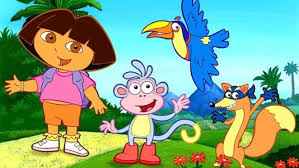In classrooms across America, every teacher knows the power of introducing the right character at the right moment. Increasingly, these influential figures come from kids animated shows that have carefully crafted personalities specifically designed to facilitate learning. These animated educators—from the curious explorers of “The Magic School Bus” to the problem-solvers of “Team Umizoomi”—have become unofficial faculty members in the educational experiences of millions of children, complementing human instruction with consistent, engaging presentations of academic and social-emotional content.
What makes these animated characters so effective as educational agents? Beyond the obvious appeal of colorful visuals and entertaining storylines, successful educational characters embody specific traits that cognitive science has linked to effective learning. They model curiosity, persistence through challenges, growth mindset, and collaborative problem-solving—the very qualities that educational psychologists identify as crucial for academic success. When children repeatedly observe these behaviors in beloved characters, they begin internalizing these approaches to learning challenges in their own lives.
The intentional design behind these animated educational figures deserves closer examination. Take Ms. Frizzle from “The Magic School Bus” series—her character embodies the ideal balance of enthusiasm and expertise that makes scientific exploration appealing without sacrificing academic rigor. Her catchphrase “Take chances, make mistakes, get messy!” encapsulates a pedagogical philosophy that normalizes the experimental nature of authentic learning. Similarly, characters like Doc McStuffins model professional competence in medical settings while simultaneously addressing emotional aspects of healthcare experiences, demystifying potentially frightening situations for young viewers.
The educational impact extends beyond the content these characters explicitly teach. Research in parasocial relationships—the one-sided emotional connections viewers form with media figures—suggests that children often transfer the trust and affection they feel for animated characters to the subject matter those characters present. When a favorite character expresses excitement about mathematics or scientific discovery, children are more likely to approach these subjects with positive expectations rather than anxiety or disinterest. This emotional transfer creates valuable openings for teachers introducing potentially challenging academic content.
Culturally responsive animated characters also play crucial roles in creating inclusive learning environments. When educational content features diverse protagonists from various cultural backgrounds, ability levels, and family structures, children from traditionally underrepresented groups find mirrors that validate their experiences while other children gain windows into diverse perspectives. This representation contributes not just to academic engagement but to the development of empathy and cultural competence that increasingly define educational success in diverse societies.
The relationship between animated educational characters and human teachers functions best as a partnership rather than a competition. Effective educators recognize that animated characters can serve as consistent reference points for key concepts, providing a shared vocabulary and set of examples that simplify complex instruction. “Remember how Daniel Tiger handled feeling angry?” becomes shorthand for emotional regulation strategies previously explored through the show, allowing teachers to build on established foundations rather than starting from scratch with each new lesson.
For parents wondering about the educational value of screen time featuring these characters, context matters significantly. Research consistently shows that co-viewing with engaged adults who ask questions and extend the content through conversation multiplies the educational benefits. When teachers provide guidance for families on how to maximize learning from animated content through simple discussion prompts or follow-up activities, they help transform passive viewing into active learning experiences that reinforce classroom instruction.
The evolution of interactive educational media has further transformed how children engage with these animated learning companions. Apps and websites featuring familiar characters now adapt to individual learning needs, providing personalized feedback and progression through educational content. These technologies allow animated educational figures to function more like tutors than television personalities, responding to each child’s specific learning pace and style while maintaining the engagement that makes animation so appealing to young learners.
Critics sometimes question whether animated characters oversimplify complex subjects or create unrealistic expectations about how education should feel—always entertaining, never challenging. However, well-designed educational animation acknowledges struggle as part of learning, often explicitly portraying characters working through difficulties and experiencing setbacks before achieving understanding. These narratives, when thoughtfully incorporated into broader educational contexts, can actually help normalize productive struggle as an essential component of authentic learning experiences.
Looking toward future developments, emerging technologies like augmented reality promise to further transform children’s relationships with animated educational characters, potentially bringing these figures into physical learning spaces in new ways. Imagine students using tablets to see their favorite educational characters demonstrating concepts right on their desks, or interactive projections that allow children to collaborate with animated experts on problem-solving tasks. These technologies may soon transform the already powerful educational impact of animated characters into even more immersive learning experiences.

